
All categories
Featured selections
Trade Assurance
Buyer Central
Help Center
Get the app
Become a supplier

(3262 products available)
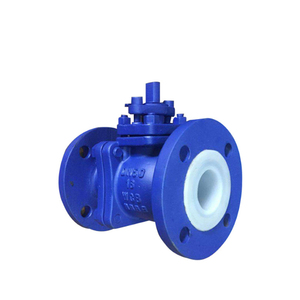


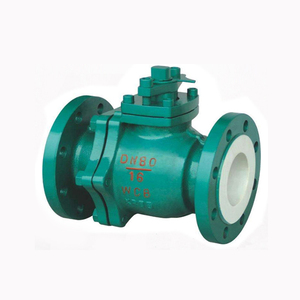
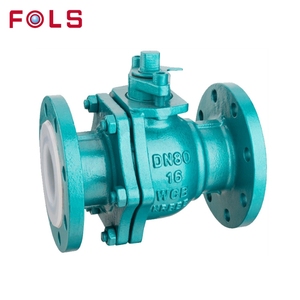























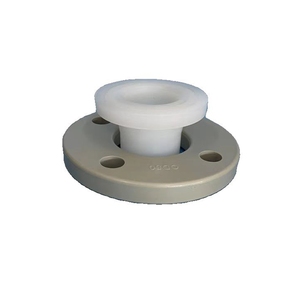
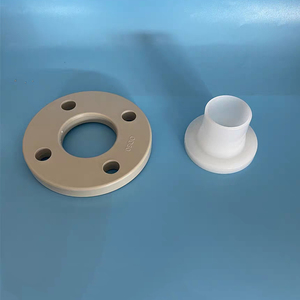



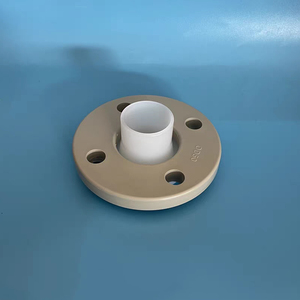
Pvdf flange manufacturers make these flanges in various types to suit different applications. Each type has unique characteristics that make it suitable for specific piping systems. Common Pvdf flange types include:
slip-on flanges
Since slip-on flanges are a commonly used type, the pipe or fitting can be inserted through it. This feature allows the flange to 'slip over' the pipe. pvdf slip on flanges are easy to align and weld, making them suitable for use in low-pressure situations. Although they are not as strong as other flange types, their simplicity often makes them a good choice for basic applications.
blind flanges
A blind flange, pvdf weld neck flange traditionally called is a solid piece used to close off a pipeline. It acts as a 'cap' for a system that doesn't allow for a permanent connection. These flanges are also useful for testing. They help identify weak points in pipes during system installation or maintenance.
weld neck flanges
Weld neck flanges have a long, tapered hub that provides a strong welded connection to a pipe. This design reduces stress concentrations at the joint, making weld neck flanges suitable for high-pressure and high-temperature environments. The construction also makes these flanges ideal for thick-walled pipes.
socket weld flanges
This flange is meant for high-pressure pipelines. These flanges have a socket or cavity that allows the pipe to be inserted. This feature provides a strong and stable connection. The socket weld design helps in distributing stress along the flange and the pipe. This distribution minimizes the risk of cracks forming in high-pressure systems.
lap joint flanges
Manufacturers make lap joint flanges specifically for use with lap joints. They are suitable for applications where easy disassembly is required. Companies often pair PVDF lap joint flanges with matching stub ends to create a removable connection. These flanges are popular in industries that prioritize maintenance and quick access to piping systems.
expansion joints
PVDF expansion joints help accommodate thermal expansion and contraction in piping systems. These flanges connect two sections of a pipeline while allowing movement. That makes them essential for systems exposed to extreme temperature fluctuations. By absorbing heat-induced expansion, PVDF expansion joints prevent damage to pipes and equipment.
ring joint flanges
People also call these flanges by the name PVDF or RJ flanges. PVDF ring joint flanges feature a machined groove on the flange faces that accommodate a metal sealing ring. This groove improves the sealing capability of the flange. Therefore, manufacturers use these flanges in high-pressure or vacuum systems. The ring provides additional support to prevent leakage, making these flanges ideal for critical applications where safety and reliability are paramount.
PVDF flanges come with a range of features. These features make them suitable for harsh chemical environments.
chemical resistance
PVDF is a high-performance thermoplastic known for its exceptional chemical resistance. This feature makes PVDF flanges ideal for use in the chemical processing, oil and gas, and pharmaceutical industries. They withstand corrosion from aggressive chemicals like acids, bases, and organic solvents. This durability ensures a longer lifespan compared to metal flanges in similar environments.
high-temperature tolerance
PVDF can maintain its structural integrity and mechanical properties. This retention occurs even at elevated temperatures of up to 120°C. This characteristic makes PVDF flanges suitable for applications in chemical processing and industrial facilities. These features help ensure the flanges perform reliably in high-heat environments.
lightweight and easy handling
Unlike metal flanges, PVDF flanges are significantly lighter. This weight allows for easier installation and handling, particularly in large-scale industrial settings. The reduced weight also translates into less strain on the supporting structures of the pipelines. This aspect enables easier adjustments during installation or maintenance.
high strength
PVDF possesses notable strength and rigidity despite being lightweight. The material's stiffness allows PVDF flanges to maintain their shape and function under mechanical stress. This characteristic is particularly important in high-pressure piping systems. It ensures that the flanges do not deform or fail during operation.
weather and uv stability
PVDF offers excellent outdoor performance due to its weather and UV radiation resistance. The flanges make an ideal choice for outdoor applications. These applications include those in construction or marine environments, where prolonged exposure to sunlight and harsh weather conditions can degrade other materials.
cost-effective
Although PVDF flanges may have a higher initial cost than some metal alternatives, their longevity and reduced maintenance requirements make them a cost-effective choice in the long run. This value is especially relevant in chemical industries where flange failure can lead to expensive downtime and maintenance.
Selecting the right pvdf pressure flanges depends on various factors to ensure optimal performance and reliability in specific applications. These factors include:
pH and concentration of chemicals
Understanding the pH and concentration of the chemicals the flanges might come into contact with is crucial. It helps determine the PVDF's compatibility and longevity. Strong acids or bases can significantly impact metal flanges. Meanwhile, PVDF's superior chemical resistance ensures that it withstands degradation in these environments.
chemical concentration
Fluorine can produce reactive mixtures and acids of high concentrations, leading to a PVDF flange breakdown. Choose PVDF flanges with high chemical concentration if intending to use them in those kinds of chemicals. These high-concentration PVDF flanges feature expoxies or Teflon for additional protection.
temperature and pressure
Consider the operating temperature and pressure of the system. PVDF flanges are effective in environments below 120°C since they can effectively resist high temperatures and enormous pressures. However, one should do a check to ensure the flanges can accommodate any fluctuations in these parameters, as this aspect can lead to system failure.
flange size and standards
PVDF flanges should match the existing piping system in terms of size and dimensional standards. Common standards include ANSI, ASME, and DIN. Use these known standards to prevent any incompatibility issues. Moreover, proper sizing is critical for ensuring tight seals. Therefore, always consult the manufacturer's specifications before making the purchase.
maintenance and longevity
Unlike metal flanges, PVDF flanges do not require frequent maintenance. They are also corrosion-resistant, which helps them to stay for a long time. This longevity makes it ideal for applications where maintenance is hard to pull off. In addition, these flanges' lightweight and easy installations contribute to low overall maintenance costs.
cost and budget considerations
Although PVDF flanges may come with higher costs than metal flanges, their longevity and reduced maintenance have great returns in the long run. Assess the total cost of ownership, including maintenance and replacement. This factor will help make more informed decisions based on financial considerations beyond the initial purchase price.
Proper installation and maintenance of pvdf backing flanges ensure that they perform effectively in challenging environments. Below is a breakdown of how to do this properly:
installation
Correct alignment of PVDF flanges during installation is vital to ensure even tightening and avoid stress concentrations that could lead to failure. The use of proper torque specifications when tightening the bolts is important. This specification will help achieve a uniform seal. Exceeding torque can warp the flange, while insufficient can cause leaks. On the other hand, using flange gaskets suited for PVDF applications further improves the sealing capabilities and reduces the risk of leaks occuring.
regular inspections
Routine inspections of PVDF flanges help in identifying signs of wear and tear, such as cracks, discoloration, or surface deformation. Catching these issues early on helps avoid more serious failures in the future. During these inspections, make a point of checking for leaks and signs of chemical corrosions.
cleaning
Regular cleaning helps in preventing the buildup of chemical residues that can affect PVDF's long-term durability. To do this, use mild detergents and water to clean the flanges. They will remain in optimal condition by removing harmful substances that will corrode the flanges. Avoid using abrasive materials that may scratch the PVDF surface.
monitoring alignment
Pipelines often expand or contract due to temperature variations. This change, in the long run, affects the alignment of PVDF flanges. Closely monitoring the alignment of these flanges will avoid excessive mechanical stress. More importantly, it will help keep the pipeline functioning properly. So, always check the alignment of the flanges whenever there is a significant change in temperature.
use of protective coatings
Implementing additional protective coatings on PVDF flanges will add an extra layer of security against aggressive chemicals. This method is particularly useful in high-concentration chemical environments, where flanges are at risk of quick deterioration. However, be sure to select coatings that are compatible with the PVDF material. Any incompatible coating will, instead, lead to more harm than good.
preventing mechanical stress
PVDF flanges are prone to warpage, and one of the causes is mechanical stress. This stress often comes from external forces or misaligned piping. Avoiding these kinds of stress will keep the flanges in their original state. That, in turn, ensures the pipeline functions at maximum capacity.
A1. PVDF's remarkable resistance to both strong acids and bases makes these flanges a popular choice for this industry. People favor them primarily because they resist chemical corrosion better than metal flanges. This feature prevents wear and tear, offering a longer-lasting, more reliable solution for high-demand chemical environments.
A2. Yes, PVDF flanges are ideal for outdoor applications. Their resistance to UV radiation and adverse weather conditions makes them suitable for outdoor installations. They won't degrade over time like other materials. That will give them a longer service life in construction and marine environments.
A3. PVDF flanges are low-maintenance compared to metal flanges. They do not corrode or require frequent repainting. This low-maintenance feature makes them suitable for hard chemical environments where keeping up with metal flanges can be costly and time-consuming.
A4. Although they are not as effective as metal flanges, PVDF flanges can still resist up to 120°C. They are great for high-temperature environments where chemicals would otherwise degrade other types of flange materials.
A5. Manufacturers ensure proper alignment and the application of appropriate torque guidelines during installation. It helps achieve even sealing without creating stress points. They also recommend flange gaskets designed specifically for chemical-resistant applications to enhance sealing.